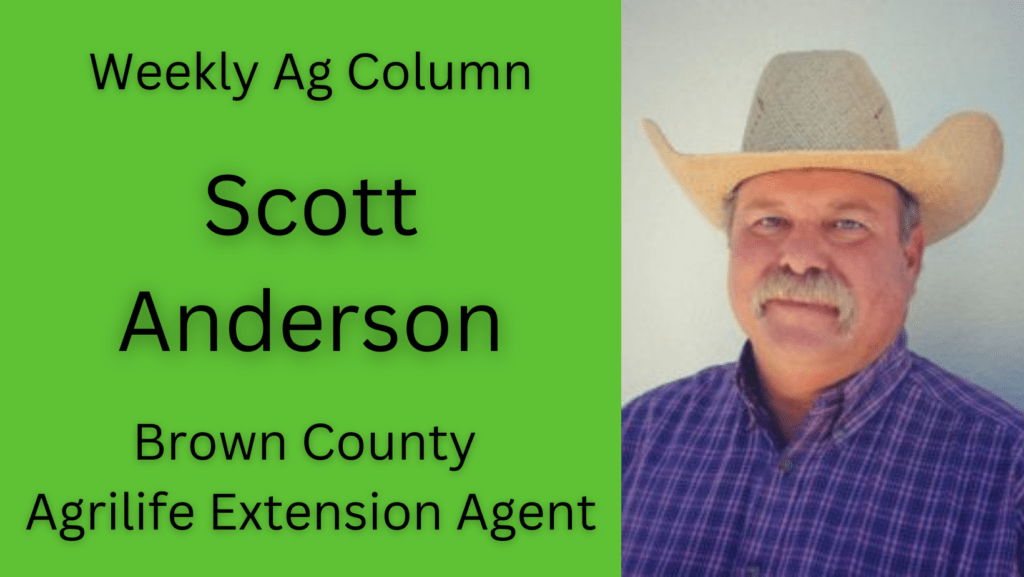
The Advancing the Fundamentals of Brush Management Workshop will be held in San Angelo Thursday, Sept. 10.
This is a free workshop with 2 General and 1 IPM CEU offered!
The program will be held at the Texas A&M AgriLife Research Center in San Angelo, TX. The program will begin at 8:00am.
Come out and join us for a day devoted to understanding and refining basic and advanced knowledge of herbicide applications. We will hear from leading industry experts, producers, and Farm Bill funding agencies!
You do not want to miss this opportunity to discuss new products and technology with rangeland managers pursuing efficacy and innovation!
Topics to be discussed:
- Selecting the Right Equipment for the Right Job
- James Jackson, Alligare
- Why Follow-Up is the Secret Key to Success
- Benny Martinez, Corteva Agriscience
- Minimizing Risk in Brush Management
- Case Medlin, Envu
- Optimizing Brush Management Applications
- “An Applicators Perspective”
- Implementing Chemical Applications through the Farm Bill
- NRCS Zone Range Specialist
- New Product and New Data Showcase
- Alligare: James Jackson
- Envu: Case Medlin
- Corteva: Benny Martinez
Below you will find the registration link! We look forward to seeing you there!
https://agriliferegister.tamu.edu/ereg/newreg.php?eventid=786144&language=eng
***
A NEW SUDAN COMING IN 2025
For much of the U.S., frost is within a page turn of the calendar. That means the prussic acid poisoning alarm for sorghum-related species will promptly be sounded. In the near future, however, there may be less need for the bullhorn.
Most farmers know the situation with sorghum species. Although the warm-season grass tolerates heat and drought better than most other annual forage options, it also produces a secondary metabolite called dhurrin that can further be converted to toxic hydrogen cyanide. This latter compound is often called prussic acid.
Dhurrin accumulates in high concentrations in young sorghum plant tissues, and when the plant is stressed by events such as drought or frost. Although most farmers manage around the risk of prussic acid poisoning in livestock, there are still many who simply prefer to avoid planting sorghum species altogether and look for other alternatives.
A few years ago, Purdue University researchers developed and tested a brown midrib (BMR), dhurrin-free sorghum-sudangrass hybrid. The utility of such a hybrid is self-apparent — there would no longer be the need to worry about when plants were harvested or grazed based on the potential for a lethal prussic acid content.
According to a recent news release from Purdue University, the Purdue Research Foundation’s Office of Technology Commercialization patented the dhurrin-free technology in 2016. Once prototype hybrids were developed, the next step was commercialization, which was successfully accomplished through a licensing agreement with California-based S&W Seeds.
According to S&W Seeds, hybrids of various sorghum species with the new trait will be available in 2025.
Even jackrabbits prefer it
Purdue’s initial animal performance testing of their dhurrin-free sorghum-sudangrass was done with mature ewes. Those studies showed a clear preference by the ewes to consume the dhurrin-free BMR hybrid compared to other BMR hybrids without the new trait.
More recently, in S&W’s test fields, another critter is exhibiting its preference for dhurrin-free sorghums. As described in the Purdue news release, “Texas jackrabbits found small plots of prussic acid-free sorghum amid S&W’s much larger sorghum fields, and every night they ate the new growth while leaving the traditional sorghum untouched.”
“These rabbits traveled 1,000 feet to find this stuff, and then they kept coming back to it,” Staggenborg explains. “We recently had a similar experience with Kansas State University researchers. They were bewildered that a plot that looked great one day was disappearing. It was jackrabbits again.”
As with the Purdue studies, S&W’s field trials have shown prussic acid-free hybrids to perform as well as conventional hybrids in terms of forage yield and nutritive value. Further, all indications point to it being more palatable. The company plans to improve the hybrids by adding select insect and disease tolerances.
Convenience plus
Unfortunately, it’s not often that we have major advancements in forage varieties/hybrids made. In my career, I can probably count them using my still intact 10 fingers. For those who plant sorghum species for grazing (especially), hay, and silage, this new dhurrin-free trait offers both animal health and performance benefits. It also adds convenience, something farmers have historically been willing to pay for. A major reason for not planting sorghum species as an alternative forage source when cool-season grasses wither during the hot, dry summer will simply disappear.
As for some additional personal commentary, this sorghum breakthrough is a prime example — but certainly not the only one — of how our public research institutions are still extremely relevant and deserve our support for holding the line on forage research and researchers.